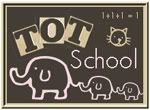- Lesson Plan- So you picked your topic, gathered your materials now based off everything you have you will now create a lesson plan for your Unit Study. Now a Unit Study can be as long or as short as you want it to be depending on how deep inside a topic you plan to go and how old your child is. An older student might spend the whole school year on a particular topic to fully research it. A younger student can spend anywhere two weeks to two months on the Unit Study. You decide its up to you. An example of I schedule my Unit Studies for History/ Geography is to break down our Topic into Subtopics and go over those during the course of the study. Ancient Egypt is a big Unit for us this year. Here is how I broke it down:
Ancient Egypt
People( Kings, Queens, Other Important People) 6 lessons 3 week
Places( Capitol City, Land Forms, Bodies of Water, Landmarks) 6 lessons 3 weeks
Culture( Religion, Government, Food, Clothing, Art, Music) 6 lessons 3 we
Events( Wars, Death, Pivotal Turning Points) 6 lessons 3 weeks
Total= 24 lessons , 12 weeks
- Lapbooking/ Notebooking- Lapbooking is basically a Scrapbooking Method used in Unit Studies to create record of important information obtained while studying a particular topic. Notebooking is basically the same concept. Where they truly differ is that Lapbooking is a collection of Mini Books where as Notebooking is entire pages of collected data and or drawings. In your Lapbooking/ Notebooking is where you take your written assignments and even worksheets a compile them in there. I think that for the younger Grammar Stage child that Lapbooking takes the stress of lengthy writing assignment where as I think that Notebooking is for a more academically mature student probably in the Middle grades to High School grades. In Classical Education we call those two levels the Logic and Rhetoric phase. I will delve further into the Stages of Classical Education in another blog soon. Since I have children in the Grammar Stage(elementary grades) I use the Lapbooking approach quite often. In my resource links to the left on my page I have posted some of favorite FREE lapbooking sites.
- Outside Activities- While doing all of your library reading and lapbooking don't neglect one of the most wonderful benefits of Homeschooling and that is flexibility of learning environment. Don't forget to include hands of Field Trips where applicable. As well as looking for apprenticeship opportunities and even actual lab classes. Like if you are studying Beethoven go and see a real Symphony performance instead of just reading about and listening to CD's. If your child is learning about Frogs go take a nature walk by a local pond and do some observations. If you have an older child learning about Human Anatomy and they want to go into deeper study try seeing if they can observe at a local hospital or mortuary.













